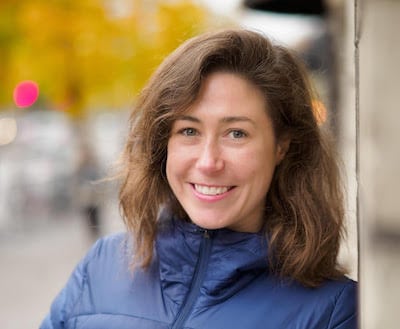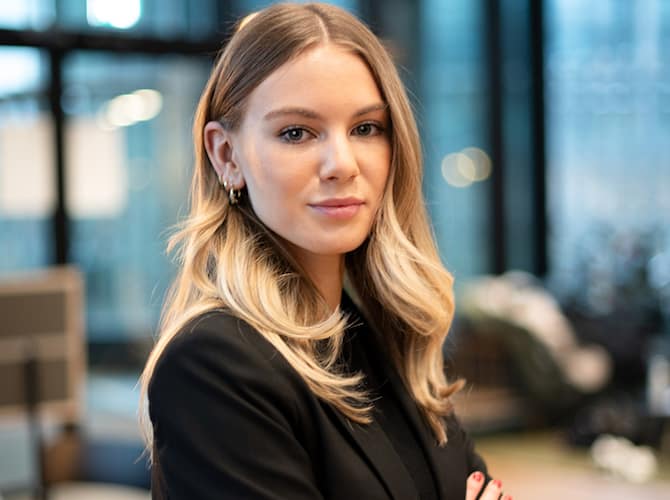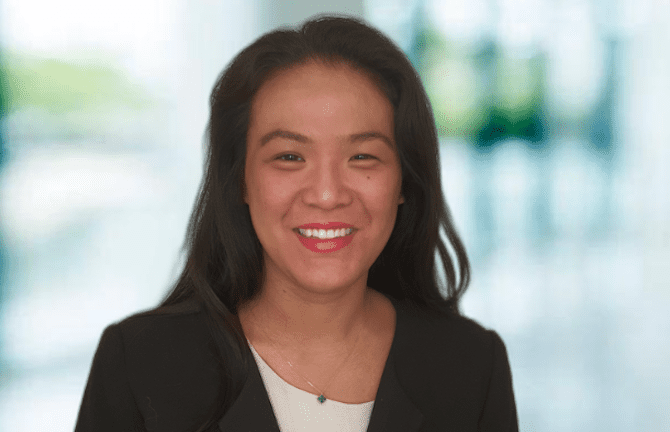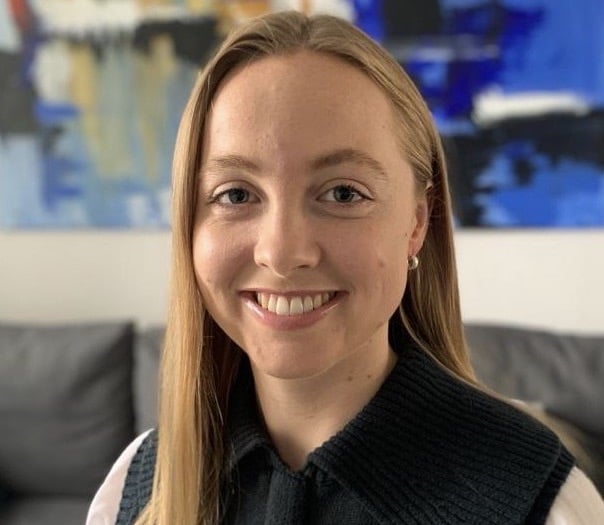Women represent just 15% of the cheque writers of angel and VC investors. Women-led startups receive just 2% of total VC funding. Silicon Luxembourg examines the movement for change coming from within the industry.
When Sophie Winwood and a group of fellow European women VCs envisioned the first European women VC summit, they only expected a handful of attendees. In September 2022, a week before the one-day event at Station F in Paris, the booking system was showing “sold out”.
“We hadn’t even released the agenda yet. We were working full time as investors while organising all this. The day became so much bigger than what we hoped,” recalls Winwood, a principal with Anthemis.
Altogether, 350 women from across Europe took part in the networking events and talks about access to VC careers, fundraising and fund progression.
“During the evening we were joined by our male allies,” said Winwood, adding: “That was cool because the guys were like ‘I’ve never been in a room where I’m the minority before, it was really intimidating!’ I said: “Welcome to our life, that’s literally every other conference!”
The conference offered a snapshot of the passion, momentum for change and mutual support women VCs are bringing to a traditionally male-dominated industry. And this work is much-needed. The damning European Women in VC report, published in May 2022, found that depending on the geography, female cheque writers represent 5-15% of angel and VC investors.
Women invest in women
The upshot is that the lack of gender diversity in VCs means even less diversity among the beneficiaries of VC funds. Pitchbook, a research firm, found that in the US female founders received only 2% of VC money in 2021.
The financial and sustainability benefits of all-women and mixed-gender founder teams have been widely documented. But, according to the WEF 2021 global Gender Gap Report, if female entrepreneurship continues at the current rate of growth, it will be 135.6 years before we close the gender gap worldwide.
“We need a greater pool of investors to bring more diversity, growth and jobs to Europe’s innovation ecosystems […] From a funding perspective, the gender gap is ubiquitous,” European commissioner for innovation Mariya Gabriel was quoted in the European Women in VC report.

Missing from the candidate pool
Women are not the only ones pushing for change. When Tioga Capital Partners, a Luxembourg-headquartered VC firm focused on early-stage crypto blockchain investments, expanded its team in early 2022, it found that women were missing from the applicant pool.
“For every 10 candidates, less than one was from a woman,” said managing director Patrick Van de Mosselaer. In a bid to build a more diverse team, Tioga sought professional advice to structure the job advert to be as inclusive as possible and requested headhunters to target female candidates. “We barely got any candidates.” Van de Mosselaer concluded that the “hectic” working conditions at a small and very specialised tech VC firm (Tioga employs 9 people) were not attractive to women candidates. But is that true?
Silicon Luxembourg interviewed four women VCs working in France, Germany, Luxembourg and the UK who described highly rewarding, meaningful and engaging roles.
“It’s the best job in the world because every day you learn something new about technologies that will change the world,” said Julia Hubo, investor at Berlin-based VC firm Embedded Capital, adding: “And you can go really deep when analysing opportunities.”
“It’s the best job in the world because every day you learn something new about technologies that will change the world. And you can go really deep when analysing opportunities.”
Julia Hubo, investor at Berlin-based VC firm Embedded Capital
Clarisse Lam, an associate at New Alpha, a VC firm investing in early-stage fintech & insurtech, said she was aware that some VCs firms were struggling to hire women. “I always find that so surprising because I know so many people who want to get into VC.”
Mia Lewis, an investor with Luxembourg-based MiddleGame Ventures, adds: “It does become somewhat chicken and egg when you look at a fund page and you can’t see anyone that you feel an affinity with. You feel like that might not be a route for you.”

One explanation could be that technology, particularly financial technology, which Tioga invests in, is already gender-skewed. According to the International Monetary Fund July 2022 Women in Fintech report, women represent less than 10% of leadership—both as founders and as members of executive boards–of fintech firms. The pace of change in new technologies can be intimidating for anyone entering the VC world. Winwood said that she seized on the opportunity to work on an insurtech fund because “I felt I had missed the wave on fintech, and insurtech was still in its nascency.”
Lewis argues, however, that you don’t always have to be an expert in the specific sub-sector the fund is investing in. “You can’t always be the subject matter expert, because often you’re speaking to a founder who’s lived and breathed that for multiple years,” she said, adding: “But that doesn’t mean that you can’t have a really engaging and valuable conversation from both sides of the table. It’s about drawing on relevant experiences and having the appetite to learn and explore new areas you may be less familiar with from the outset.”
Who is in your network?
Winwood reckons the greatest challenge for women accessing VC roles is getting the first break. She describes the Catch-22 of VC, in which firms require VC experience but you cannot get experience if you cannot get into VC. Winwood was very lucky to have had the opportunity to work with a female partner from the start of her career. She said: “Anthemis was the second role that I applied for. I was very fortunate they took a chance on me having had no VC experience previously.”
“I was very fortunate they took a chance on me having had no VC experience previously.”
Sophie Winwood, Anthemis
Lam reckons that the field is opening up. She landed her current role after participating in UK mentoring and development programme Future VC during the pandemic. Today she sees more VC job postings online, something which she said was less the case before. “I think that also helps bridge the gap between men and women because everyone can at least be aware of the same opportunity vs. when the hiring is made through the network,” she said.
Not all VC firms struggle to recruit women. Of the 45-strong team at Anthemis, half are women, half of the partner team are women and one of the two founders is a woman. “Anthemis is a weird beast,” admits Winwood, explaining that the founders were intentional from the start. “They knew that in order to cultivate change in the financial system we needed to have a diverse and inclusive team at the forefront. That is why diversity and inclusivity remains one of our guiding principals.”
Am I qualified?
Assuming a VC job is posted in a place where women candidates can see it, it is a widely reported practice that women are more likely to apply if they have 90% of the attributes required, compared to men who apply if they meet only 60% of requirements. Meanwhile, some of the stereotypes about qualifications and previous roles for entry to VC may be dissuasive for women candidates.
Lam, who has a master’s in management from a business school in France, broke into the industry after participating in a dedicated programme. In Luxembourg, the Luxembourg Private Equity Association’s (LPEA) began an Academy to make knowledge about the sector more accessible. “Normally, it starts with great studies, internships, and a little bit of luck,” LPEA director Stéphane Pesch said, acknowledging that business schools are costly and can be an obstacle to diversity.
Different treatments in the business
Once women break into the VC world, experiences can be mixed. “The community is incredibly supportive,” said Hubo. “Once you’re in, it’s very easy to not just see new opportunities within the world popping up. But also people who are so helpful in the sense that the GP of the first fund I was at connected me with the founders of the place I work at now.”
Lewis found that working for a small firm meant she was more included in high-level discussions. “There are four partners and me as an associate so I have direct channels to each of them and can actively promote and engage in all discussions. I can present and debate at the investment committee even though I may not have an official vote, it’s still expected that I engage as if I was on that level,” she said.
“It’s harder to network, you have to work so much harder to get into these circles that men are naturally in.”
Sophie Winwood
People may use different language and ways of communicating around women, whether consciously or not, which can impact their career progression. For instance, research shows that women are more likely to be asked risk prevention-oriented questions, compared to their male peers, something that Dana Kanze speaks about in this 2017 TEDTalk.
And despite the fact that all four women said they felt fully included in the process to decide which firms to invest in, some felt they were not viewed equally by founders. Lam said: “There are times when they don’t expect me to have any weight in decision making. I don’t know if it’s because I’m a woman. Maybe it’s just because I’m an associate and I don’t have that partner title.”

Some of the four shared stories they had heard of unequal treatment and exploitative behaviours. These included female founders going to what they thought was a pitching conversation with a male investor and finding out it was a date. Another heard of a female GP raising funds whose contract stipulated an eight-hour working day, “because they don’t trust them to commit their time to the fund.”
Progressing from junior to senior roles
The sheer numbers attending the European Women VC summit show that the industry is embracing the skills women can bring to venture capital at the junior level. Real change will come as they progress into general partner roles. But, as Commissioner Gabriel points out: “The employment pyramid is steep with very few at partner level [….] even though women investors often surpass their male counterparts in achieving returns on investment.”
“The employment pyramid is steep with very few at partner level [….] even though women investors often surpass their male counterparts in achieving returns on investment.”
European Commissioner Mariya Gabriel points
Winwood feels she has been very lucky to work with Ruth Foxe Blader, a partner at Anthemis – who she counts as a role model, mentor and friend. Ruth pushed Winwood to go for a promotion before she felt comfortable. Nevertheless, being the only woman in the room at networking events takes its toll.
“It’s harder to network, you have to work so much harder to get into these circles that men are naturally in,” said Winwood. She adds that it can be frustrating too when she sees how hard she has to fight for female founders “when I feel that they’re the same level, if not better than men. Because it’s so much easier to say ‘yes’ to a man, who receives passive recognition. Probably no one is doing it maliciously, it’s just the status quo.”

Lewis agreed that while there is a growing diversity in funds, “as you then move up the stack, it drops off fairly significantly.” She views VC inclusivity more holistically and sees a solution in working with the top rung of the VC chain, starting with the limited partners. She said: “We need to see greater female representation throughout the value chain: LPs, GPs and Founders. I think it’s something like only 20% of LP engagement is with women. GPs themselves need to have stronger female representation and raise larger funds. And then female founders and startups need to receive more funding.”
“We need to see greater female representation throughout the value chain: LPs, GPs and Founders.”
Mia Lewis
Hubo agreed on the need for more women in the cap table, something which could be achieved with greater financial education of women. She said: “Hopefully, bringing more women into cap tables of companies as investors will have a knock-on effect and then lead to them bringing more of their personal networks in on the founding side and more female founders being funded.”
The LPEA’s Stephane Pesch said he expects change to come “but it takes time”. The difficulty is that female founders are fighting for their businesses which, like any startup, require funding. They cannot wait 135.6 years for the power dynamic to shift. Women VCs are working hard for greater diversity in the industry, not just in terms of gender, but also seeking to include people from other minorities.
“You can’t just sit there and expect them to come to you. You have to work harder. But not that much harder. You just have to be a little bit more open and think about your networks and where they lead you,” Winwood said. “You can’t expect to continue the way you were and expect results.”
